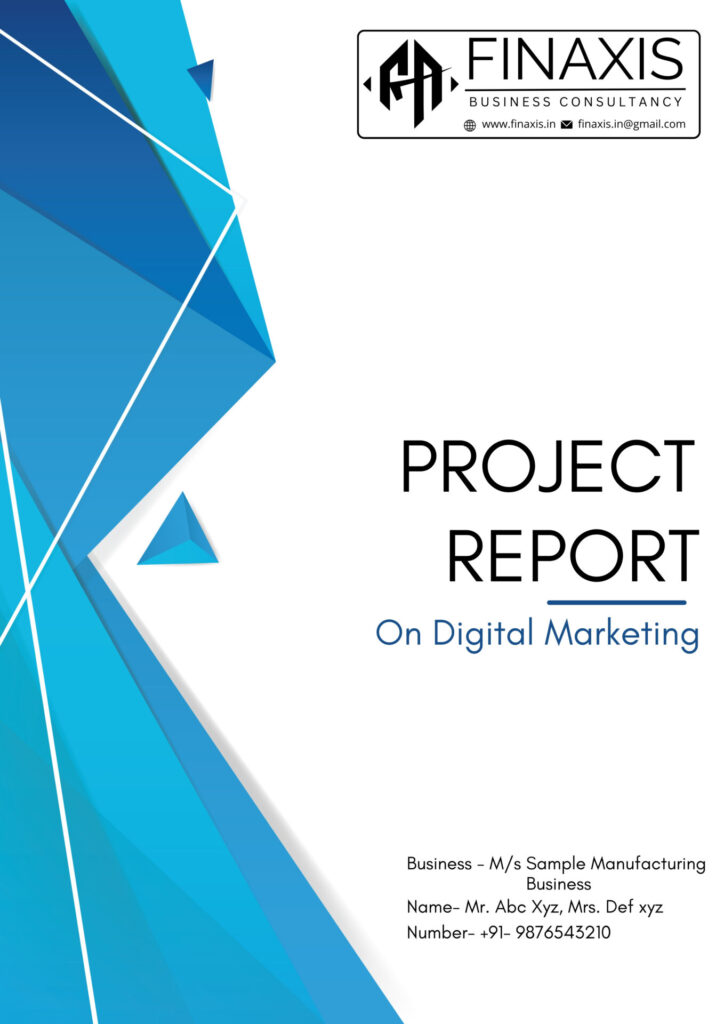
Securing Financial Backing: Crafting The Perfect Bank Loan Project Report

Obtaining funding is frequently a crucial stage in the entrepreneurial process, and a well-written project report is essential to this endeavor. Understanding the essential components of a project report might be the difference between acceptance and rejection when applying for a project loan, whether you’re looking for a standard company loan or investigating government-backed options like the Mudra loan.
Let’s examine the essential elements of writing an excellent project report for a bank loan.
Understanding the Landscape: Bank Loans vs. Mudra Loans
1. Bank Loans:
Traditional bank loans are requested by firms at various phases of growth. They frequently include a thorough examination of the borrower’s financial situation, credit history, and the feasibility of the planned project.
2. Mudra Loans:
Overview: The Pradhan Mantri Mudra Yojana (Mudra Loan) is a government-backed project in India that aims to provide financial assistance to small and micro businesses. Mudra loans are divided into three stages based on the business’s level of development and finance requirements: Shishu, Kishor, and Tarun.
Crucial Elements of a Bank Loan Project Report
1. Executive Summary:
The executive summary provides an overview of the complete project report.
Include project objectives, projected investment, expected returns, and the loan’s intended purpose.
2. Project Description:
Purpose: Provide a full summary of the project, including its scope, industry relevance, and unique selling points.
Key Points: Create a clear and captivating story emphasizing the project’s feasibility and potential success.
3. Market Analysis:
Purpose: Show an understanding of the market, target audience, and industry trends.
Key Points: Include market research results, competitive analysis, and prospective problems to demonstrate a full understanding of the company landscape.
4. Financial Projections:
Goal: Present attainable financial projections that highlight the project’s profitability.
Important Points: Provide thorough estimates for income, costs, and profits for a given time frame. For clarification, use charts and graphs.
5. Implementation Plan:
Goal: Describe the project’s implementation strategy in detail.
Important Points: Describe the schedule, checkpoints, and distribution of resources. Emphasize the ways in which the loan will be used to complete each project phase.
6. Risk Analysis:
The goal is to identify possible dangers and present mitigation techniques.
Important Points: Evaluate internal and external threats. Demonstrate your capacity to foresee obstacles and handle uncertainty with skill.
7. Conclusion:
Goal: Provide an overview of the project’s feasibility and the anticipated effects of the financing.
Key Points: Highlight the benefits to the business and the lender while reiterating the project’s potential for success.
Tailoring for Mudra Loans
1. Loan Category Alignment:
Recommendation: Clearly connect your project report with the Mudra loan type (Shishu, Kishor, or Tarun) that best fits your business stage and finance needs.
2. Simplified Language:
Recommend using plain and uncomplicated language. Mudra loans are intended to support small and micro-enterprises, thus avoid superfluous language.
3. Financial Inclusion:
Recommendation: Emphasize how your project promotes financial inclusion and complements the government’s objective to empower small companies.
Conclusion:
Navigating the Approval Journey making a strong case for the success of your company is the key to writing the ideal project report for a bank loan or Mudra loan. You can increase your chances of loan approval and show that you are committed to the project and aware of its complexities by paying close attention to every important detail. Recall that a skillfully written project report is more than simply a document—it’s a strategic instrument that drives your company’s expansion and financial success.







